"Symmetric" refers to the regular repetition of the same part of an object to achieve a balance. Symmetrical electromagnetic fields are the study of electromagnetic fields that maintain some invariant properties in development and change. Symmetry is an equilibrium point. However, the symmetry of the electromagnetic field is incomplete. For example, electromagnetic waves, whose electric field vector, magnetic field vector, and wave vector direction satisfy the right-hand rule, are called right-body electromagnetic waves. From the symmetry point of view, there should be "left-sided" electromagnetic waves, that is, electric field vector, magnetic field vector and wave vector vector follow the left-hand rule, but there is no left-sided electromagnetic wave in practice. To this end, the author proposes a left-sided electromagnetic wave symmetrical with a right-sided electromagnetic wave, and discusses the inevitability, production method and main characteristics of the occurrence of left-sided electromagnetic waves.
1 Left-sided electromagnetic waves are the inevitable result of the development of symmetric electromagnetic field theoryThe left and right electromagnetic waves constitute the left and right symmetry of the electromagnetic field. The proposal of left-sided electromagnetic waves is contrary to the traditional right-hand rule of electromagnetic induction theory, but it conforms to the symmetry law of nature.
Symmetry is the inevitable result of the evolution of biological evolution. In order to survive, people must form a symmetrical structure [1]. In order to fly, the left and right wings must be symmetrical. Therefore, science and art attach great importance to symmetry. For science, symmetry determines the various possible laws of conservation and is therefore more fundamental. In science, symmetry refers to the invariance or conservation under certain operations, and symmetry is often associated with the law of conservation. Corresponding to the spatial translation invariance is the law of conservation of momentum; the law of conservation of energy corresponds to the invariance of time translation; the conservation of angular momentum corresponds to the invariance of rotational transformation; and the parity of spatial reflection (mirror) operation corresponds to parity. Conservative. There are many symmetrical forms in the physical world: force and reaction, positive and negative, attraction and rejection, positive and antiparticle.
The symmetry of electromagnetic fields is a process of continuous development and improvement. From the discovery of magnetic phenomena, to the discovery of electricity, and then to the study of the properties and laws of electricity and magnetism, the symmetry of electricity and magnetism is reflected. Later, Maxwell proposed two hypotheses that change the electric field to generate a magnetic field and change the magnetic field to generate an electric field, creating the electromagnetic field theory. The usual Maxwell equations are
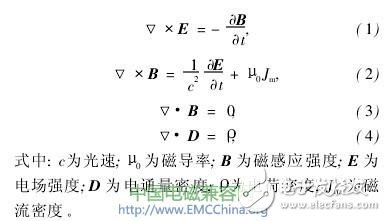
This equation group profoundly reveals the nature of electromagnetic phenomena, and describes the law of charge, current excitation electromagnetic field and internal motion of electromagnetic field under normal conditions. On the one hand, the Maxwell equations show that electricity and magnetism have symmetry, that is, a changing electric field generates a magnetic field, and a changing magnetic field generates an electric field. On the other hand, it shows that the symmetry of the electric field and the magnetic field is incomplete. It can be seen from equations (1) and (2) that the electric field and the magnetic field have asymmetry of the rotation, and the magnetic field is formed by not only the changing electric field but also the electric current formed by the charge motion; the electric field can be seen by the equations (3) and (4). The divergence of the magnetic field is asymmetrical, the magnetic field is passive, and the electric field is generated by the electric charge. This shows that symmetry gives the commonality of the electromagnetic field uniformity and makes it harmonious and orderly; the symmetry breaking brings the difference of various fields formed by electricity, magnetism and electromagnetic, breaking the balance, stability, static and not caused by symmetry. The order of change.

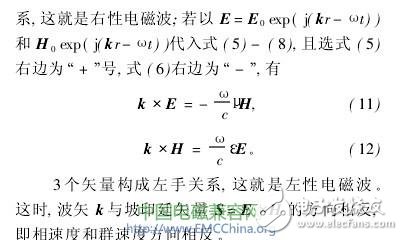
It can be seen from the symmetry of the above electromagnetic field that the left and right electromagnetic waves can constitute a left and right symmetrical electromagnetic field. It is inevitable that the left electromagnetic field exists in the law of symmetry.
2 The existence of left-sided electromagnetic wavesAccording to the principle of symmetry, symmetry is the law of the development of things and the unity of change. Therefore, the electromagnetic field should also follow this law and obey the law of symmetry. Since there is a right-sided electromagnetic wave, there must be left-sided electromagnetic waves.
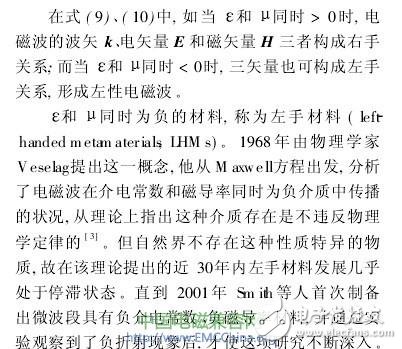
In nature, there is no material in which the dielectric constant ε and the magnetic permeability μ are both negative, and a material in which the dielectric constant ε and the magnetic permeability μ are simultaneously positive is equivalent to a negative material under certain conditions. It is assumed that atoms and molecules in the material can be regarded as bound electron oscillators that resonate at a certain natural frequency ω0. Under the action of the external electric field, when the frequency of the external electric field is ω ω0, the electron generates a displacement with respect to the nucleus, and induces a polarization in the direction of the external electric field, that is, the polarization direction is consistent with the direction of the external electric field, and the dielectric constant is positive. When ω→ω0, the harmonic oscillator resonates with the external electric field, the polarization induced by the external field is large, and a large amount of energy is accumulated in the resonator, so that when the direction of the external electric field is reversed, the polarization direction of the resonator is hardly Affected. That is to say, when the frequency is close to the resonance frequency ω0, the polarization of the harmonic oscillator is converted into the same phase as the external electric field to be inverted with the external electric field, thereby
There is now a negative effect. This makes it feasible to change the right-sided electromagnetic wave into the left-wave electromagnetic wave after passing through the left-hand material, indicating that the left-sided electromagnetic wave conforming to the left-hand rule exists.
When the right side of equation (5) is "+" and the right side of equation (6) is "-", equations (11) and (12) can be derived, and left-sided electromagnetic waves can be generated. Is it possible to select the symbols of equations (5) and (6)? Can be analyzed in three-dimensional space (5)
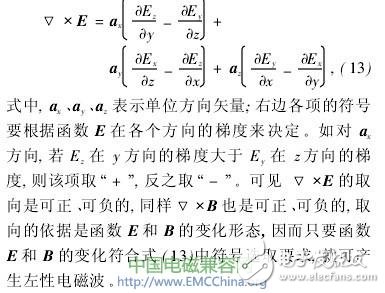
In the National Natural Science Foundation of China project "Research on the principle of three-dimensional image information reconstruction based on magnetic flux leakage detection", the experiment was carried out using a symmetric strong electromagnetic field device, and it was found that the same polarity magnetic field impact can be
Excitation produces left-sided electromagnetic waves.
When the isotropic polar magnetic field collides, the generated wave is a kind of magnetic wave. The exciting wave is generated by applying the pulse current to the two coils shown in Fig. 1. The rising edge of the pulse current is required to be extremely steep, and the current of the two coils is synchronized to ensure the magnetic field at the peak point. Collided. Also requires the magnetic field generated by the coil
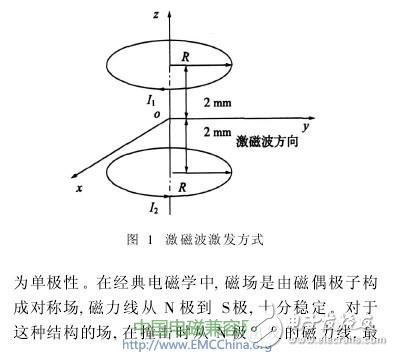
It is necessary to return to the S pole, that is, the excitation wave will return to the original place soon after flying, but if the magnetic source is formed into a unipolar magnetic source, the magnetic field line can fly to infinity when struck. Figure 2 shows the method of forming a double-ended, identical-polarity magnetic source. Based on this principle, the two coils in Fig. 1 form a magnetic monopole structure, and the directions of the magnetic fields generated by the excitation current are opposite.
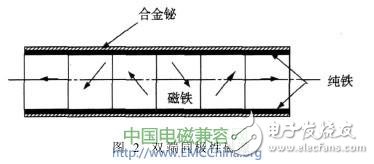
A magnetic field with magnetic unipolarity of the same polarity is applied at the excitation. If the excitation wave has magnetic unipolarity in the near field, the wave is concentrated and the amplitude is enhanced; for example, the excitation wave has a SN or NS dipole structure in the near field. Then the wave is weakened or even emitted. The magnetic unipolarity of the magnetic shock wave was verified by the method of FIG. The experimental results show that the amplitude of the transmitted wave is nearly doubled, which indicates that the excitation wave has magnetic unipolarity in the near field.
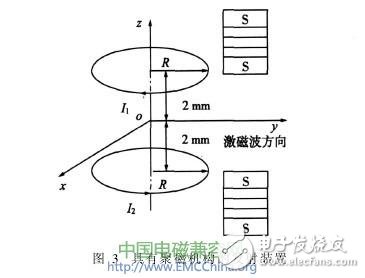
The field structure formed by the magnetic monopole is not as strong as the dipole-type magnetic field, and its vortex direction is easy to control, which lays a foundation for generating left-sided electromagnetic waves. When the excitation current is completely symmetrical, the excitation wave is symmetrical along the xy center plane, and the two excitation waves move in parallel. When the excitation current is asymmetrical, the magnetic fields on both sides are unbalanced, and the high magnetic field gradient turns the direction of the vortex to a direction in which the magnetic field is weak. Therefore, by adjusting the magnitude of the two excitation currents and the steepness of the pulse front, the induced electromagnetic waves of the excitation wave can satisfy the orientation of &TImes;E and &TImes; B, and realize the electric field, magnetic field, and wave vector 3 according to equations (9) and (10). ) Right-hand rule or formula (11), (12) left-hand rule selection. Since the excitation wave is a moving magnetic field, electromagnetic waves can be induced. By changing the excitation current characteristics, left and right electromagnetic waves can be generated.
4 ConclusionThe left-sided electromagnetic wave exists from the symmetry theory of the electromagnetic field, and the left-side electromagnetic wave can be generated by adjusting the excitation mode of the excitation wave.
However, the left-sided electromagnetic wave is a new concept. The current research on its physical nature, excitation mechanism, electromagnetic characteristics, etc. is still superficial and needs to be further deepened.
Digital Signage,Digital Screen Poster,Android Video Players,Digital Signage Display Screen
APIO ELECTRONIC CO.,LTD , https://www.displayapio.com
